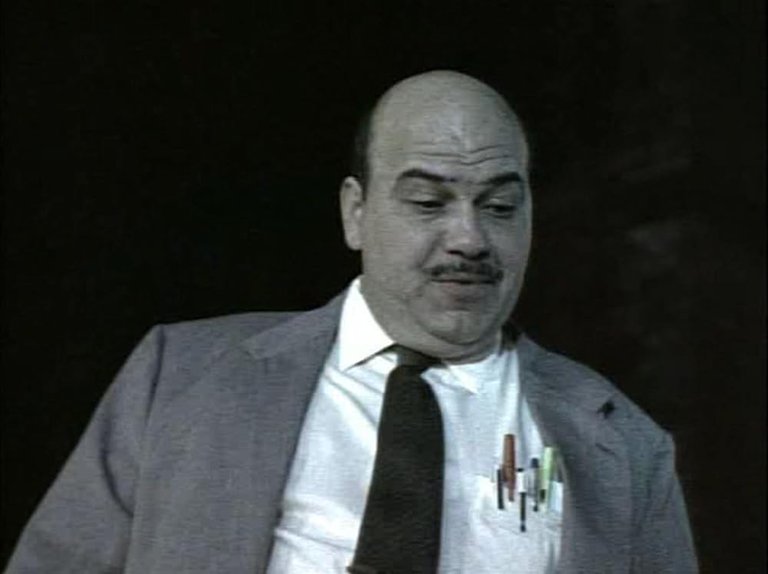
Gone for Goode (S01E01)
Airdate: 31 January 1993
Written by: Paul Attanasio & David Simon
Directed by: Barry Levinson
Running Time: 47 minutes
The 1990s is often dismissed as a period lacking in significant television achievements, with few willing to label it the "Golden Age of Television" save for the most ardent nostalgics. However, this perception overlooks several high-quality shows that emerged during this decade, laying the groundwork for the elevated standards of 21st-century television. Among these, albeit somewhat underrated, is the police procedural drama Homicide: Life on the Street, which premiered on January 31, 1993, with its inaugural episode, Gone for Goode.
Homicide: Life on the Street draws its inspiration from David Simon's critically acclaimed non-fiction book Homicide: A Year on the Killing Streets, published in 1991. Simon, a reporter for the Baltimore Sun, meticulously chronicled the daily operations of the Baltimore Police Department's Homicide Unit. His involvement in the series was significant; he co-wrote the script for "Gone for Goode" and served as one of its producers. Simon would later achieve further acclaim with another Baltimore-centric series, The Wire, which would build upon many of the themes introduced in Homicide.
While Gone for Goode is not a pilot episode in the traditional sense—NBC had already commissioned an entire season based on Tom Fontana's compelling pitch—it effectively serves as an introduction to both the characters and the unique narrative style of the series. The confidence displayed by NBC in ordering a full season before even airing an episode speaks volumes about Fontana and his production partner Barry Levinson's vision. Levinson, an esteemed director and Baltimore native, played a crucial role in shaping the show’s aesthetic and thematic direction.
The episode functions as a pilot by not only introducing key characters but also establishing how Homicide distinguishes itself from other police procedural dramas. The series employs a modern and stylistically innovative approach, featuring jump cuts and handheld camera work that contribute to its gritty realism. Shot on location in Baltimore, this choice enhances the feeling of hyperrealism that permeates throughout the show.
Another noteworthy aspect of "Gone for Goode" is its departure from traditional episodic structures commonly found in police procedurals, which typically focus on resolving a single case within an hour. Instead, this episode introduces multiple criminal investigations that vary in complexity and resolution. Some cases are swiftly resolved while others evolve into multi-episode arcs or remain unresolved altogether. This narrative structure reflects the chaotic nature of real-life policing and aligns with Homicide's overarching theme of exploring systemic issues within law enforcement.
The ensemble cast introduced in "Gone for Goode" comprises several memorable characters who would become central to the series' identity. Many of these characters are inspired by real-life detectives featured in Simon's book. Among them are Steve Crosetti (played by Jon Polito), whose obsession with Lincoln assassination conspiracy theories adds a quirky layer to his character; Meldrick Lewis (played by Clark Johnson), his laid-back partner; Beau Felton (played by Daniel Baldwin), a macho detective whose nonconformity challenges traditional norms; and Kay Howard (played by Melissa Leo), notable as the unit's only female detective. The character of John Munch (played by Richard Belzer), former 1960s radical, is particularly intriguing; he would go on to appear in numerous other television shows, marking him as one of television's most enduring characters. Additionally, Frank Pembleton (played by Andre Braugher) is introduced as an intellectual detective skilled at eliciting confessions, while rookie Tim Bayliss (played by Kyle Secor) provides viewers with a fresh perspective as he navigates his first days on the job under Captain Al Giardello (played by Yaphet Kotto), whose duality as both a nurturing and intimidating figure sets a compelling tone for team dynamics.
In balancing its dark themes—primarily revolving around an unrelenting tide of violence linked to crack cocaine—with moments of levity, Gone for Goode showcases a nuanced approach to storytelling. The title itself references a hit-and-run victim whose presence is felt throughout but never seen onscreen. The killer's confession—prompted by his own foolishness after dyeing his hair—serves as a reminder that even amidst tragedy, human folly can provide moments of dark humour.
However, the episode culminates in a starkly serious note when Bayliss discovers the body of 11-year-old Adena Watson. This pivotal moment launches a significant story arc inspired by real-life events documented in Simon’s book, particularly echoing the tragic case of Latonya Wallace.
The success of Gone for Goode was evident from its reception; Levinson was awarded an Emmy for Outstanding Directing in a Drama Series following its airing. Moreover, this episode received homage in later seasons through callbacks to its dialogue and setting during poignant moments, particularly evident in Forgive Our Trespasses, which mirrors elements from Gone for Goode.
RATING: 7/10 (+++)
Blog in Croatian https://draxblog.com
Blog in English https://draxreview.wordpress.com/
InLeo blog https://inleo.io/@drax.leo
Hiveonboard: https://hiveonboard.com?ref=drax
Rising Star game: https://www.risingstargame.com?referrer=drax
1Inch: https://1inch.exchange/#/r/0x83823d8CCB74F828148258BB4457642124b1328e
BTC donations: 1EWxiMiP6iiG9rger3NuUSd6HByaxQWafG
ETH donations: 0xB305F144323b99e6f8b1d66f5D7DE78B498C32A7
BCH donations: qpvxw0jax79lhmvlgcldkzpqanf03r9cjv8y6gtmk9
Posted Using InLeo Alpha